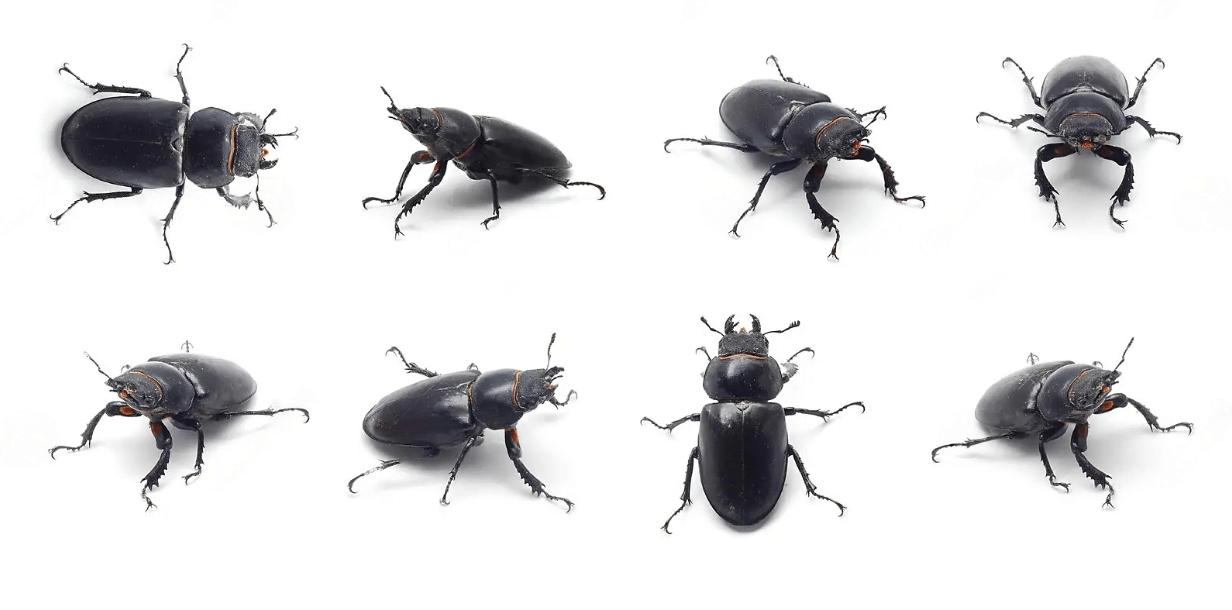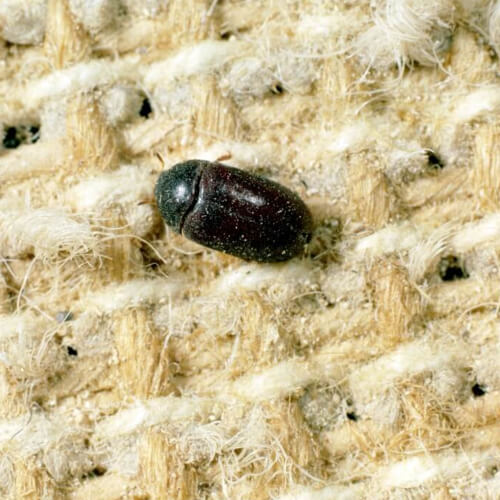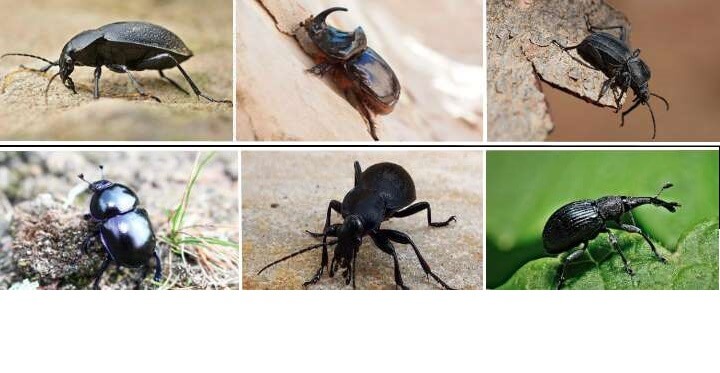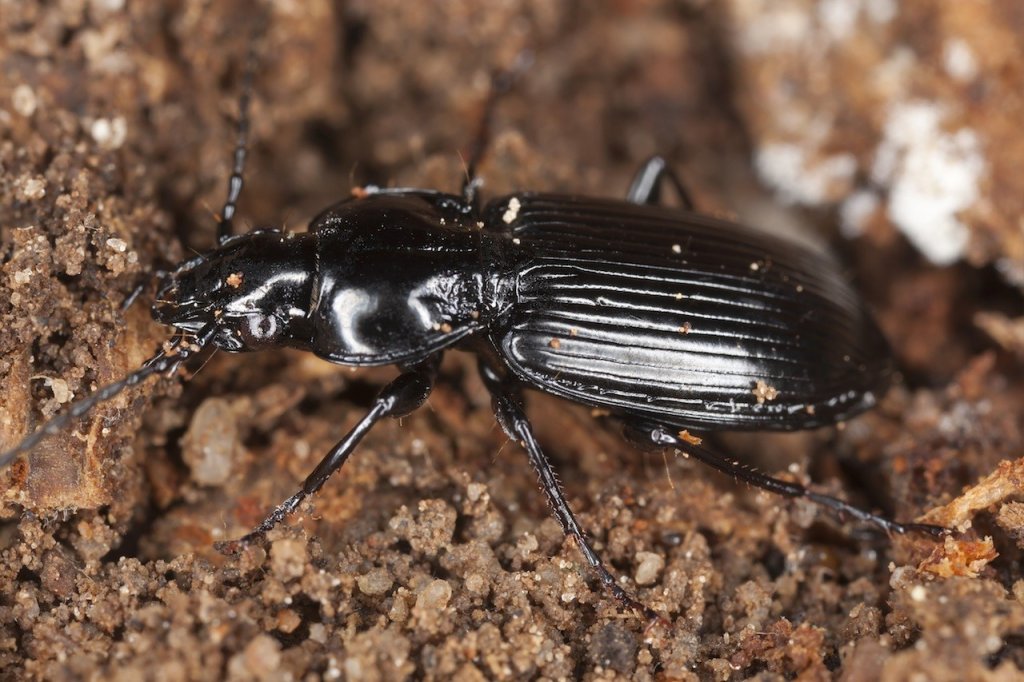Contrary to their intimidating looks, the black beetle is a relatively passive insect and causes little to no harm to a human being. Some people even admire the beauty of black beetles and keep them as pets; a little strange, but to each their own.
In the United States of America, the black beetle is quite prevalent and is found commonly in and around households; these beetles have a life cycle of about 290 to 300 and sometimes even 350 days, from eggs to larvae to pupa to a full-grown adult.
Although most of them are non-violent and don’t bite, they do cause a lot of damage to objects around a common household, like wool, silk, leather, fur, feathers, etc.
Do They Bite?

There are many species of black beetles found worldwide, and none of them bite humans; some of them pinch a little, but even that isn’t painful enough to be categorized as a bite. The one that is more prevalent in the U.S., the black carpet beetle, does not bite humans but causes damage in other ways.
The internet is filled with people complaining of a rash on their hands, knees, etc., due to a black beetle bite. Still, upon further investigation, 96% of them are an allergic reaction, which some humans may develop towards a black beetle.
This allergic reaction is largely believed to be caused when the human skin comes in contact with the body of a black beetle or its larvae, and sometimes even when a black beetle gets accidentally squished by a human being.
And this is nothing to be worried about as not everyone is allergic to a black beetle. In the extraordinary event that someone is, there is nothing a few antihistamines or anti-itch medicines like creams and ointments can’t solve. So, for the short answer, no, black beetles don’t bite humans.
Check and Control

Now, once the black beetle infests a household, they can become quite a nuisance, and certain measures are to be taken to keep these in control and get rid of; more than not, this can become a challenge for people.
The first step in this is to locate the source of the infestation, mainly the carpets in the house, wardrobes, food storage places, and furniture around the house. But the major source of black beetles is animal skin/fur. These insects are more likely to be in a house where there is a dead animal carcass, for example, a squirrel or a mouse, so watch out for these little devils if you recently found a dead rodent anywhere in your house.
As for removing them, heat is one major source, so a bit of steam treatment for your carpet and washing your clothes in warm to hot water should help you get rid of these. But if the problem persists on a larger scale, a call to pest control shouldn’t be delayed for longer.
The clothes that have been proven to have an infestation of black beetles should be kept separately and sealed in a plastic bag to avoid any further re-infestation. Other measures to control the spread would be to use glue traps and increase the frequency of vacuum cleaning the carpets around the house.
The Extended Family

Apart from the black carpet beetle, other black beetle types can be found in common households in the U.S., and almost all of these are harmless to human beings directly; some of the more common ones are:
- Cedar Beetle
- Pine Sawyer Beetle
- Rhinoceros Beetle
- Darkling Beetle
- Hermit Flower Beetle
Some other types of black beetles to watch out for are:
- Furniture beetles: these critters can often get a free ride into your home through firewood or furniture that is often carried out into the backyard and back inside.
- Black Vine Weevils: these are also harmless to humans and pets and can be found in the solid around plants. One can get rid of these by using appropriate measures of pesticides.
- Red Blister Beetle: Usually not life-threatening, but these beetles emit a type of toxin that, if it comes in contact with human skin, can cause blisters. Our advice would be not to pick them up or touch them.
- American Oil Beetles: More commonly known by the name of Meloe. Like their sibling, these also emit a chemical when threatened that can cause serious blisters on the skin that don’t really last long but do pain a lot.
All in all, beetles are not really harmful to humans, except a few that can sometimes cause allergies or blisters, but even the chemical emitting type doesn’t engage unless threatened. It’s the human possessions that are more in trouble with these beetles than the humans themselves.
Conclusion
To sum it up, the black beetles commonly found in and around households are largely harmless to humans as they don’t bite; in rare cases of rashes due to allergic reactions, these beetles can be easily managed with appropriate creams and ointments. It’s the household items such as carpets, clothes, and furniture that are more of a target for these critters than the humans themselves.
But one shouldn’t hesitate to call pest control if the problem escalates to a larger scale, at the same time taking appropriate measures of identification and ensuring cleanliness around the house.
Be sure to check out these other posts for more insights and information:

